Grow local, eat local

Ingredients of Southern Hokkaido
Let's study in Hakodate, Southern Hokkaido, a region famous for its ingredients and its food traditions!
The charms of learning in Southern Hokkaido, a region blessed with mountains and seas!
Our school is located in Hakodate, Southern Hokkaido, a region blessed by its relatively warm climate and ingredients from the sea and the mountains. Hakodate has been an exotic city since the Edo period, when Western countries met Japan. In Hakodate, you can feel a traditional spirit as well as a spirit of initiative in many fields: Japanese cuisine, Western cuisine, Chinese cuisine, Japanese confectionery, Western confectionery or bread making. Make the best use of this natural and historical environment and make delicious French, Japanese, Sushi and Chinese cuisine, as well as delicious Western and Japanese sweets. With our school, make your first step towards professionalism!
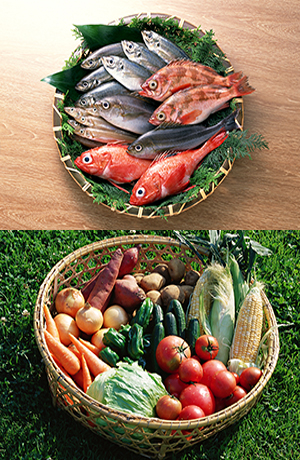
Local producers' messages
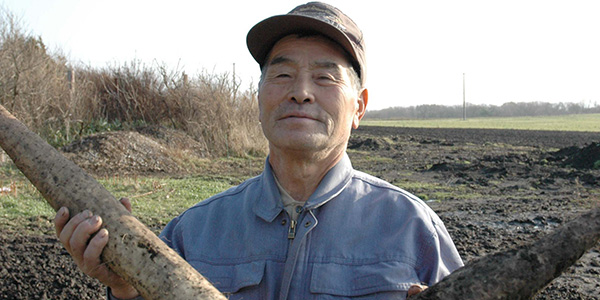
Mr. Shuji Kaneko, Kaneko Farm Representative
In Hakodate, we produce different kinds of vegetables, like Chinese yams, potatoes, burdock or carrots.
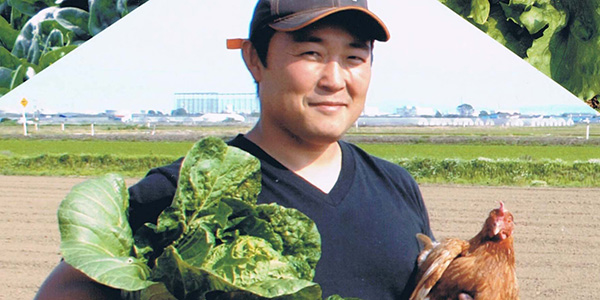
Mr. Shigekatsu Takasaka, Takasaka Farm Representative
From Hokuto City, we deliver vegetables and free-range eggs to restaurants and families in Hakodate.
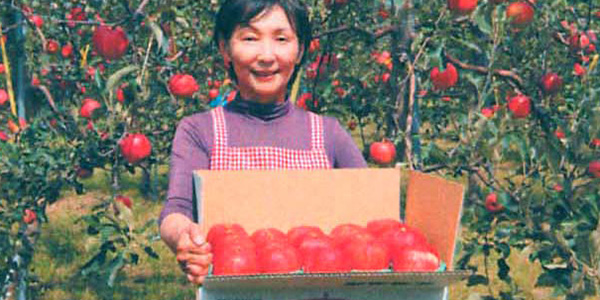
Ms. Eiko Miyago, Miyago Orchard Representative
We produce delicious apples, prunes, peaches and cherries in Nanae town, and we sell and send them everywhere in Japan.
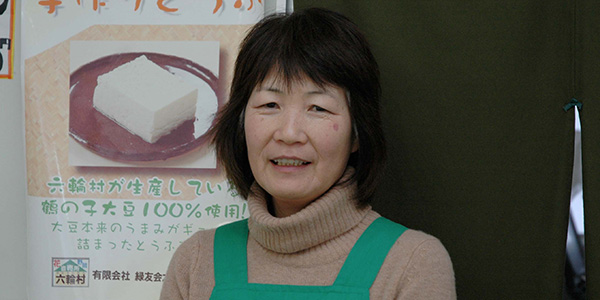
Ms. Yuriko Todera, Representative Director, Ryokuyukai Rokurin Village Co., Ltd.
Mothers of farmers from Hokuto City gathered and opened a greengrocery.
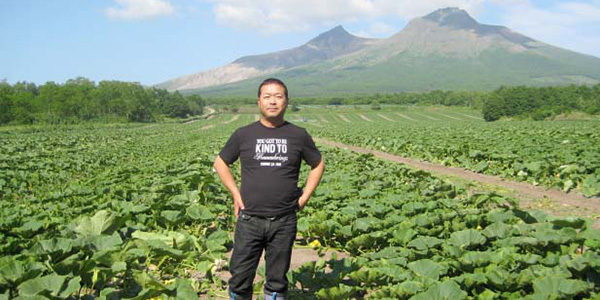
Mr. Seiji Miyoi, Representative Director, Miyoi Corporation
In Mori Town, we produce delicious organic pumpkins that are sold everywhere in Japan.

Mr. Chihiro Ishikawa, Representative Director, Ishikawa Fruits and Vegetables Co., Ltd.
We sell delicious organic vegetables grown in Southern Hokkaido to hotels, restaurants and hospitals in Hakodate.

Mr. Chihiro Ishikawa, Representative Director, Ishikawa Fruits and Vegetables Co., Ltd.
We sell delicious organic vegetables grown in Southern Hokkaido to hotels, restaurants and hospitals in Hakodate.
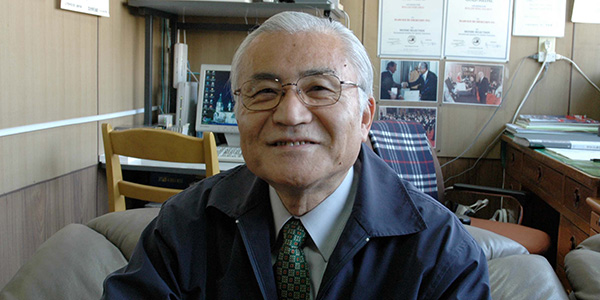
Mr. Hiroshi Kaneko, Representative Director and Chairman, Marukiti Food Co., Ltd.
We make tasty kelp rolls for the world with kelp from Southern Hokkaido.
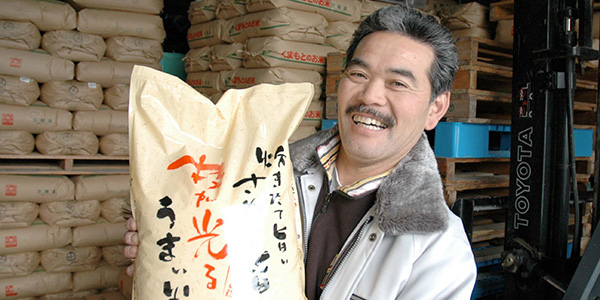
Mr. Chimayuki Shimizu, Shimizu Farmer Representative.
We grow delicious organic vegetables and rice in Hokuto city.
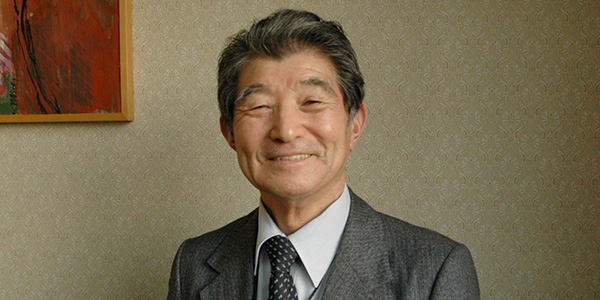
Mr. Takashi Kaneko, Chairperson and Representative Director, Hakodate Dairying Corporation.
We collect raw milk from dairy farmers of the Southern Hokkaido area and produce delicious milk and dairy products.
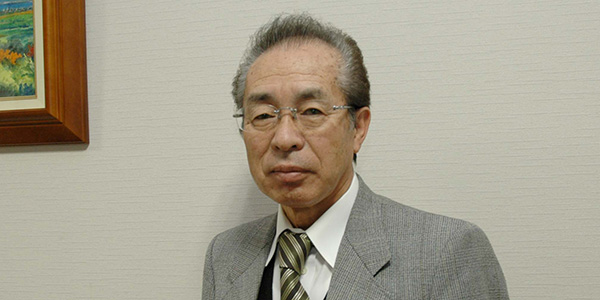
Mr. Masatomi Tokikane, Representative Director, Tokikane Chikuhan Co., Ltd.
We sell fresh meat from animals raised in the Southern Hokkaido area to grilled meat (yakiniku) restaurants in Hakodate.
Ezo shika meat (gibier) diffusion project
Ezo shika (Hokkaido deer) is a subspecies of the shika deer that can only be found in Hokkaido. People tend to avoid its meat because it is wild, but in fact it is delicious and nutritional. Therefore, our school engages every year in activities that allow families to know more about this meat. Ezo shika eats all kind of plants and causes damages to the agricultural fields. Our school uses Ezo shika meat, a natural ingredient of our region, to make delicious dishes.
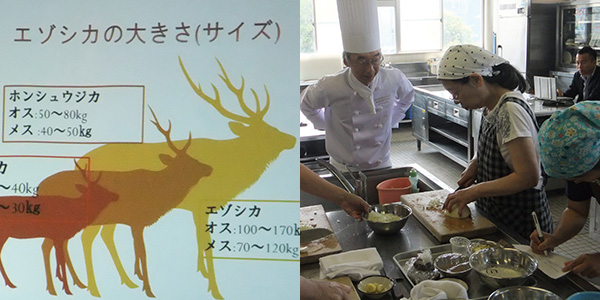
Joint activities with the "4H Club"
Agricultural products from Nanae, a town next to Hakodate city, are very popular. We often carry out joint activities with the “4H Club”, the Nanae Young Farmers Club. Our students can learn about local agricultural products through agricultural experiences, and learn how to make meals and sweets with local products. Those meals are then offered to kindergartens and elementary schools in Nanae.
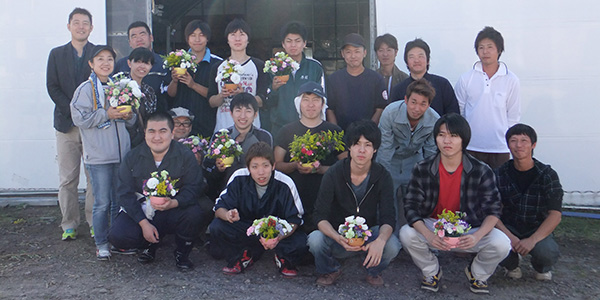
Tasting events
In order to raise the value of meals prepared with local ingredients and to promote our region, we created a research group and the members of this group also organize dinner events, whose purposes are:
- 1. To study meals prepared with local ingredients
- 2. To allow producers to exchange ideas concerning local ingredients
- 3. To allow participants to exchange through food
Participants are people involved in the food industry (fishery and agriculture) and municipal officials coming from 18 towns of the Oshima / Hiyama area, but also people from Aomori prefecture.
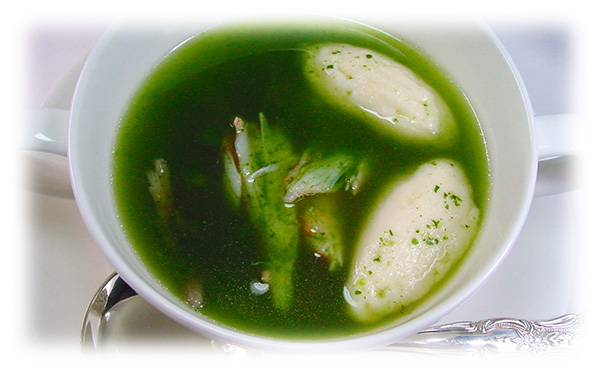
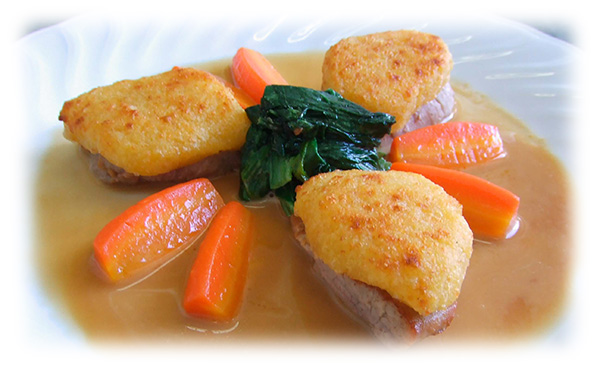

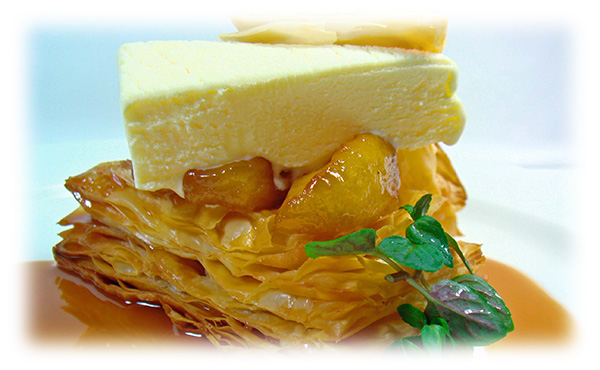
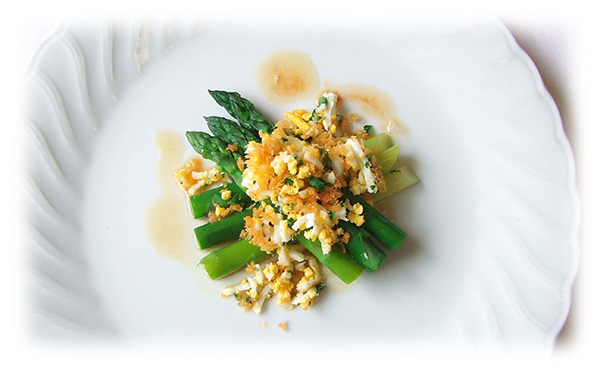
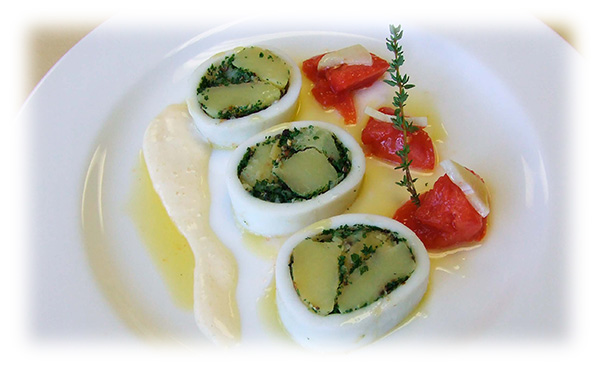
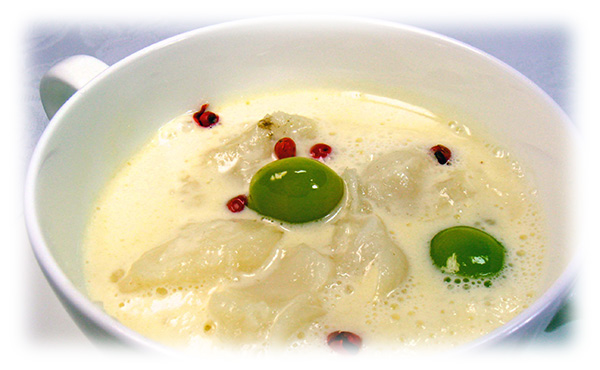
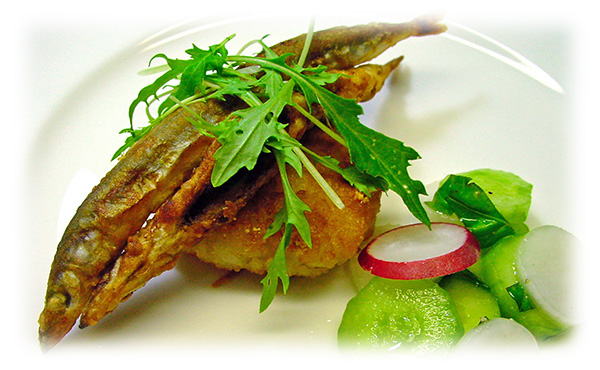
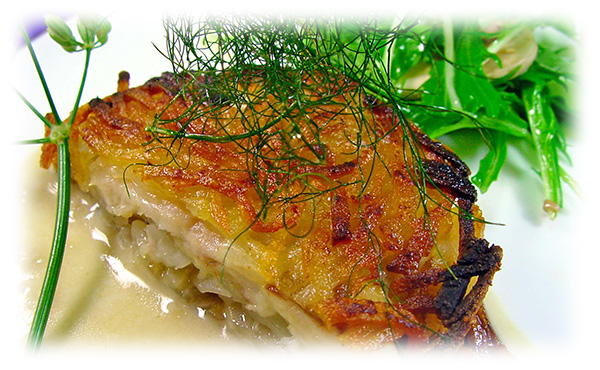
Collaboration with the Hirosaki University
Institute of Food Sciences
We built an academic exchange program with the Hirosaki University Institute of Food Sciences. The partnership agreement was signed on the 19th of November, 2015, at the Nebuta Museum WA-RASSE, a place that presents the culture of Aomori. The objective of this partnership is to contribute to the formation and development of a regional community, through cooperation and activities. We especially want to promote the high-quality products of the Tsugaru Strait area.
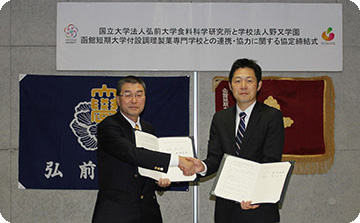
Until now, in our school, we didn’t only train cooks and confectionery hygienists; we also have supported promising food producers of the Tsugaru Strait Exchange Area, including 18 municipalities in Southern Hokkaido. We also implemented many activities to contribute to our region, like tasting events or cooking workshops using local ingredients. Now, with the worldwide Japanese culinary boom, we would like to train professionals able to be internationally active and who can properly transmit the real Japanese cuisine.
Also, as our efforts and future vision are consistent with the orientation of the Hirosaki University Institute of Food Sciences to promote the food of Northern Japan (especially from the Tsugaru Strait Exchange Area), we built a partnership to internationally promote ingredients from Northern Japan and to brand them.
During the ceremony celebrating the conclusion of the agreement, our Principal, Mr. Junji Nomata, said: “Abundant ingredients are the weapon of the Southern Hokkaido Area, and I want to spread the charms of this diverse food culture.” Mr. Naotsune Saga, Director of the Hirosaki University Institute of Food Sciences, then said: “I want to contribute to our region by making the Seikan (Aomori-Hakodate) area the center of our food growth strategy.” Finally, Mr. Kei Sato, President of Hirosaki University, said: “The Seikan cooperation is important, and I hope that this agreement on the food field will help develop cooperation in other fields.”
Thanks to this agreement, our school and Hirosaki University Institute of Food Sciences will carry on the joint development of the “Aomori platter” and the “Seikan Full Course and Seikan Platter”, based on the idea of a Tsugaru Strait Gourmet Corridor. We will also work on coordination in the food field by unifying integrated food Sciences, in order to promote the Tsugaru Strait Exchange Area and support the growth strategy of the region following the opening of the Hokkaido Shinkansen line.
Areas of collaboration
- (1) Studies, research and development about local food resources.
- (2) Promotion of the knowledge of local food resources, with a sophisticated branding.
- (3) Promotion of the local food industry.
- (4) Training of local food talents.
- (5) Anything that we will judge as necessary to achieve the purposes of the preceding articles.
History of Hakodate’s food culture
Hakodate is facing the Tsugaru Strait, a strait that connected the Japanese archipelago to Mainland China 20,000 years ago. The Tsugaru Strait is a natural fishing zone, where cold and warm currents collide, and it made the fishing industries prosperous. The quality of Hakodate’s seafood is high: in 2011, a bluefin tuna fished in Toi (a port in Hakodate) was sold for 32,490,000 yen (approximately 290,000 US dollars).
Japanese cuisine, especially the cuisine from Kyoto, Kansai, has become popular all over the world. Kelp (in Japanese, kombu) is an indispensable ingredient of Japanese cuisine, and can only be found in the cold region of Hokkaido. The kombu produced in Minamikayabe (Hakodate) is recognized as a top quality product and is known as the “Offering Kombu”, a product to offer to high class people.
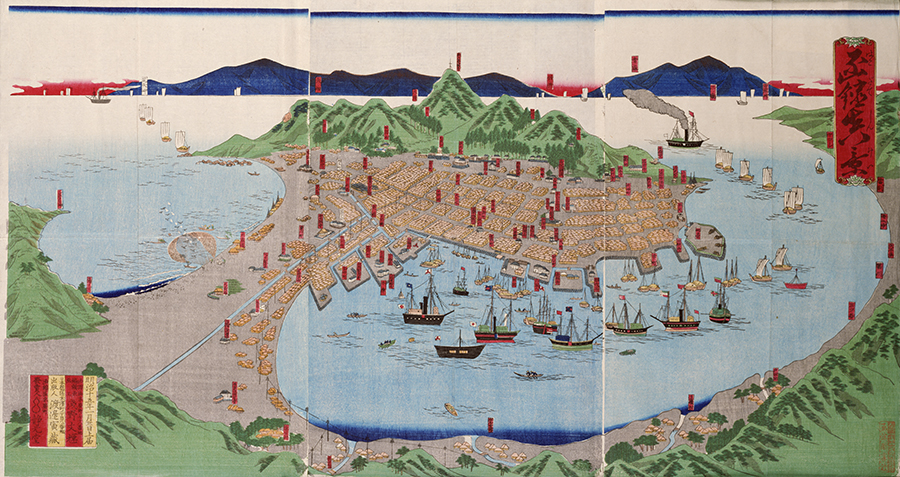
From the 17th century to the middle of the 19th century, exchanges between Japan and foreign countries were strictly limited, but at the request of the USA, trade began in Hakodate and four other Japanese ports. Many foreigners started living in Hakodate and they transmitted their skills to Japanese people, like skills in Western cuisine, food processing, agriculture and dairy farming. Those skills were further enhanced by the determination and the meticulousness of the Japanese people. Hakodate became a port where people and goods come and go, and now possesses a rich food culture history.
